3DWarehouse

Aircraft Warning Service (AWS) Spotting Station
by 3DWarehouse
Last crawled date: 10 months, 1 week ago
Aircraft Warning Service (AWS) Hoppers Island observation post: Hoppers Island, MD - Ray Simmons was in charge of the Hoppers Island, MD observation shed and was tasked with the duty of finding local volunteers the work the numerous shifts required to accomplish this mission. Thousands of these sheds were placed along the East Coast during WWII and manned 24 hours each day during the period 1942-1944 in an effort to spot German aircraft that might threaten the United States mainland. Built: 1942 Built by: Calvert Cannon, Emory Parker Cost: $175-200 Inactive status: Oct 1943 The Aircraft Warning Service was the creation of the U.S. Army Ground Observer Corps, with the trained observers consisting entirely of civilian volunteers. In the summer of 1941, before the United States had entered the war, there was concern for the safety and security of the nation. The United States Army worked with the American Legion to begin to develop a plan for aircraft observation posts that would be staffed entirely by civilian volunteers. The posts covered both the East and West coasts, as well as the Gulf of Mexico and around the Great Lakes. The AWS established more than 14,000 posts with the help of as many as 1.2 million civilian volunteers, who took shifts constantly scanning the skies for aircraft. Ground Observer Corps (GOS) Aircraft Warning Service (AWS) Posts During World War II. - On the east coast, the AWS was under the auspices of the Army Air Force's: 1st Interceptor Command (later First Fighter Command or I Fighter Command) based at Mitchell Field, New York. Almost 750,000 volunteers served under the First Fighter Command whose jurisdiction stretched from Canada to Key West, Florida. - On the west coast, the AWS was under the auspices of the: 2nd Interceptor Command - covered primarily Washington state. III Interceptor Command went from No. Carolina to Texas, therefore included the Gulf Coast. IV Interceptor Command (later Fourth Fighter Command or IV Fighter Command) based in Riverside, California mainly covered California. - On both coasts, observation posts, information centers and filter centers were established. The United States entered World War II on Dec 7, 1941. Many of those who could not join the military for whatever reason were recruited to the AWS. Statistically, this led to a preponderance of women, apparent in the surviving material, but seemingly little recognized. The first Ground Observer Corps was a World War II Civil Defense program of the United States Army Air Forces to protect United States territory against air attack. The 1.5 million civilian observers at 14,000 coastal observation posts performed naked eye and binocular searches to detect German or Japanese aircraft. Observations were telephoned to filter centers, which in turn forwarded authenticated reports to the Aircraft Warning Service, which also received reports from Army radar stations. The program ended in 1944. #Coast_Artillery, #Military, #Army, #WWII, #WW2, #AWS, #Aircraft_Warning_Service, #Observation, #Observation_Post, #Look_Out, #Army_Air_Force,
Similar models
cg_trader
free

Grumman F7F Tigercat
...rawn from service in 1954. (source wikipedia) blender flightgear aircraft historical lowpoly challenge historic historic aircraft
grabcad
free

Grumman F7F Tigercat
...ype was too large to operate from older and smaller carriers, and only a late variant (f7f-4n) was certified for carrier service.
3d_export
$60

sikorsky h-19 chickasaw
.... coast guard and u.s. marine corps versions were all redesignated as h-19s like their u.s. army and u.s. air force counterparts.
3d_export
$60

grumman f8f bearcat
...ted states marine corps, and the air forces of other nations. it was grumman aircraft's last piston engined fighter aircraft.
3d_export
$60

grumman f4f wildcat
...nd world war. the disappointing brewster buffalo was withdrawn in favor of the wildcat and replaced as aircraft became available.
3dwarehouse
free

US Army M113A1 Mobile Command Post Carrier Set 01
...rom a free 3d resource. author has either kitbashed models or edited textures. scale: nts. #war #military #vehicles #army #people
grabcad
free

F82 Twin Mustang
...rces were shot down by f-82s, the first being a north-korean yak-11 downed over gimpo airfield by the usaf 68th fighter squadron.
cg_trader
$89

Curtiss JN-2 Jenny V02
...sed out the curtiss
for newer aircraft in the mid and late 1920s, these aircraft were sold as surplus to the civilian population.
cg_trader
$69

Curtiss P-6 Hawk
... in the late 1920s with the united states army air corps and operated until the late 1930s prior to the outbreak of world war ii.
grabcad
free

Grumman F8F Bearcat
...bearcat have broken speed records for piston-engined aircraft. today, the bearcat is popular among warbird owners and air racers.
Aws
turbosquid
$11

Helm Of Awe
...quid
royalty free 3d model helm of awe for download as blend on turbosquid: 3d models for games, architecture, videos. (1419249)
cg_studio
$196

AW-1393d model
...393d model
cgstudio
.3ds .c4d .lwo .max .obj - aw-139 3d model, royalty free license available, instant download after purchase.
cg_studio
$196

AW-139 Copterline3d model
...model
cgstudio
.3ds .c4d .lw .obj - aw-139 copterline 3d model, royalty free license available, instant download after purchase.
cg_studio
$150

AW-139 air ambulance3d model
...l rescue chopper
.3ds .c4d .obj - aw-139 air ambulance 3d model, royalty free license available, instant download after purchase.
3d_export
$150

AW 139 air ambulance 3D Model
...helicopter ambulance emergency hospital executive vip medical rescue chopper
aw 139 air ambulance 3d model tartino 10505 3dexport
turbosquid
$71

AS TS Awful Monster Skeleton
...s ts awful monster skeleton for download as max, obj, and fbx on turbosquid: 3d models for games, architecture, videos. (1288937)
3ddd
$1

Стиральная машина Whirlpool серия AWE
...ральная машина whirlpool серия awe
(awe 7515/1) с вертикальной загрузкой
габариты: 60*40*82см
полигоны/вершины: 19 206 / 23 682
cg_studio
$196

AW-139 RAF3d model
...and a-139 aw139 copter
.3ds .lw .max .obj - aw-139 raf 3d model, royalty free license available, instant download after purchase.
cg_studio
$196

AW-139 a3d model
...don air services canada
.3ds .c4d .max .obj - aw-139 a 3d model, royalty free license available, instant download after purchase.
cg_studio
$196

AW-139 Beijing Police3d model
...
cgstudio
.3ds .dxf .max .obj - aw-139 beijing police 3d model, royalty free license available, instant download after purchase.
Warning
turbosquid
$10

Warning Flammable
...model warning flammable for download as ma, max, fbx, and obj on turbosquid: 3d models for games, architecture, videos. (1628354)
turbosquid
$15

Warning Symbol
... available on turbo squid, the world's leading provider of digital 3d models for visualization, films, television, and games.
turbosquid
$10

Warning Barrier
... available on turbo squid, the world's leading provider of digital 3d models for visualization, films, television, and games.
3d_export
$5

warning triangle
...ady. with blender and photoshop .psd files for personal customization!<br>verts: 332<br>faces: 222<br>tris: 648
3d_export
$20

Warning Signs 3D Model
...warning signs 3d model
3dexport
sign warning traffic road roadway european
warning signs 3d model supermegamau 18750 3dexport
turbosquid
$29

5 Warning Light
...id
royalty free 3d model 5 warning light for download as c4d on turbosquid: 3d models for games, architecture, videos. (1538332)
turbosquid
free

Radiation Warning Sign
...alty free 3d model radiation warning sign for download as fbx on turbosquid: 3d models for games, architecture, videos. (1446692)
turbosquid
$20

Radar Warning Reciever
... available on turbo squid, the world's leading provider of digital 3d models for visualization, films, television, and games.
turbosquid
$19

Plastic Warning Drum
... available on turbo squid, the world's leading provider of digital 3d models for visualization, films, television, and games.
turbosquid
$15

signs-warning-001
... available on turbo squid, the world's leading provider of digital 3d models for visualization, films, television, and games.
Spotting
archibase_planet
free
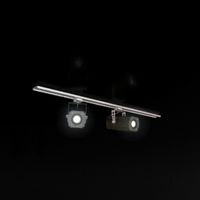
Spot
...spot
archibase planet
luminaire spot candlelight
spot n070308 - 3d model (*.gsm+*.3ds) for interior 3d visualization.
archibase_planet
free
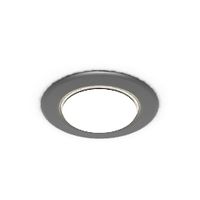
Spot
...spot
archibase planet
lighting luminaire candlelight
spot - 3d model (*.gsm+*.3ds) for interior 3d visualization.
3d_export
$5

spot chair
...spot chair
3dexport
modern spot chair
3ddd
$1
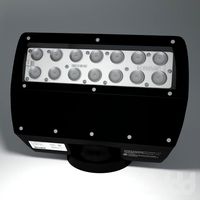
light Spot
...light spot
3ddd
ecosense spot light
3ddd
$1

Bebop spots
... light , cosmo
подвесной светильник bebop spots. диаметр 450мм.
3ddd
$1

Jumbo Spot
...jumbo spot
3ddd
kare , тренога
jumbo spot
3ddd
$1

davide groppi spot sistema, spot 1
...davide groppi spot sistema, spot 1
3ddd
davide groppi
davide groppi spot sistema, spot 1
corona+vray
turbosquid
$9

Spot
... available on turbo squid, the world's leading provider of digital 3d models for visualization, films, television, and games.
turbosquid
$8

spots
... available on turbo squid, the world's leading provider of digital 3d models for visualization, films, television, and games.
design_connected
$16

Spot Light
...spot light
designconnected
spot light computer generated 3d model.
Station
3d_export
$5

station
...station
3dexport
station
archibase_planet
free
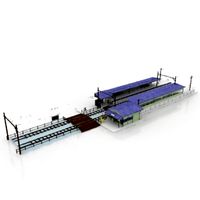
Station
...station
archibase planet
railroad station railway station bay
railway station n160707 - 3d model for interior 3d visualization.
archibase_planet
free

Station
...station
archibase planet
intercom station equipment
intercom station - 3d model for interior 3d visualization.
archibase_planet
free
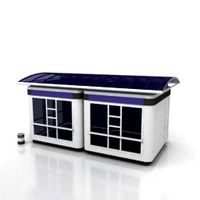
Station
...station
archibase planet
station
station n260108 - 3d model (*.gsm+*.3ds) for interior 3d visualization.
3d_export
$5

Station
...station
3dexport
low poly bus station
archibase_planet
free

Station
...station
archibase planet
building station construction
station n170708 - 3d model(*.gsm+*.3ds) for interior 3d visualization.
archibase_planet
free

Station
...station
archibase planet
bus station bus stop
station 1 - 3d model (*.gsm+*.3ds) for interior 3d visualization.
archibase_planet
free

Station
...station
archibase planet
bus station bus stop
station 2 - 3d model (*.gsm+*.3ds) for interior 3d visualization.
archibase_planet
free
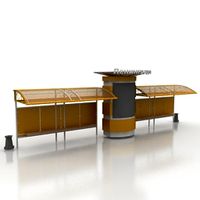
Station
...station
archibase planet
bus station bus stop
station 3 - 3d model (*.gsm+*.3ds) for interior 3d visualization.
3d_ocean
$19
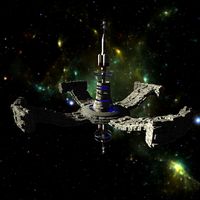
Space station
...space station
3docean
space station
space station
Aircraft
3d_export
$5

aircraft
...aircraft
3dexport
fighter
turbosquid
$10

Aircraft
...bosquid
royalty free 3d model aircraft for download as blend on turbosquid: 3d models for games, architecture, videos. (1282614)
turbosquid
$10

Aircraft
...urbosquid
royalty free 3d model aircraft for download as max on turbosquid: 3d models for games, architecture, videos. (1358098)
turbosquid
$10

Aircraft
...urbosquid
royalty free 3d model aircraft for download as max on turbosquid: 3d models for games, architecture, videos. (1203234)
turbosquid
$12

Aircraft
...d
royalty free 3d model aircraft for download as stl and ipt on turbosquid: 3d models for games, architecture, videos. (1392946)
3d_export
$8

aircraft
...aircraft
3dexport
turbosquid
$35

aircraft
...ty free 3d model aircraft for download as blend, fbx, and obj on turbosquid: 3d models for games, architecture, videos. (1537037)
turbosquid
$119

aircraft
... available on turbo squid, the world's leading provider of digital 3d models for visualization, films, television, and games.
turbosquid
$49

AirCraft
... available on turbo squid, the world's leading provider of digital 3d models for visualization, films, television, and games.
turbosquid
$40

Aircraft
... 3d model aircraft for download as ma, max, obj, c4d, and fbx on turbosquid: 3d models for games, architecture, videos. (1389237)
Service
archibase_planet
free
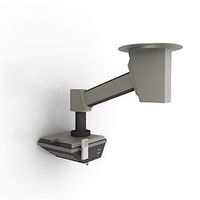
Service
...service
archibase planet
service pendant hospital equipment
surgical service pendant - 3d model for interior 3d visualization.
3ddd
free

Service
...service
3ddd
сервиз
3ds max 2010.v-ray 2.40.03.file formats fbx,obj. service
3d_export
$5
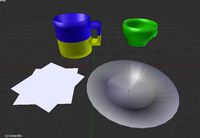
Service
...service
3dexport
made in blender
3ddd
$1

Service
...service
3ddd
сервиз , посуда
;)
archibase_planet
free

Tea-service
...archibase planet
tea-service cover place setting kitchen ware
tea-service - 3d model (*.gsm+*.3ds) for interior 3d visualization.
3d_export
$7

bedding service
...bedding service
3dexport
the bedding service from the is the embodiment of absolute comfort and impeccable modern style.
3ddd
$1

Service
...ice
3ddd
сервиз , посуда
сделано по фото, размеры могла немного не соблюсти)) извините))
turbosquid
$99

Rail services
...quid
royalty free 3d model rail services for download as fbx on turbosquid: 3d models for games, architecture, videos. (1147245)
turbosquid
$20

Service Cart
...squid
royalty free 3d model service cart for download as obj on turbosquid: 3d models for games, architecture, videos. (1294512)
turbosquid
$6

Service station
...id
royalty free 3d model service station for download as fbx on turbosquid: 3d models for games, architecture, videos. (1708506)
